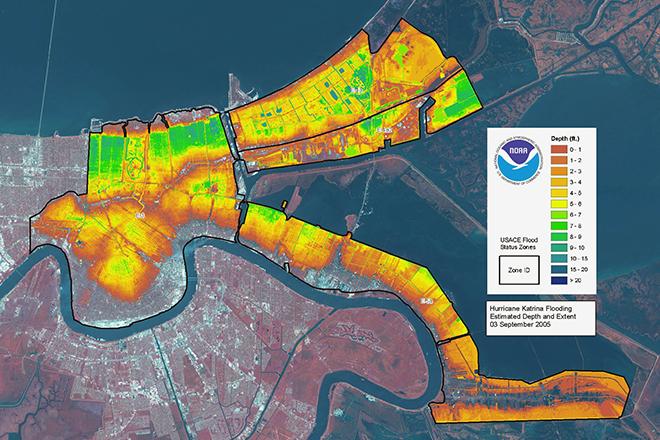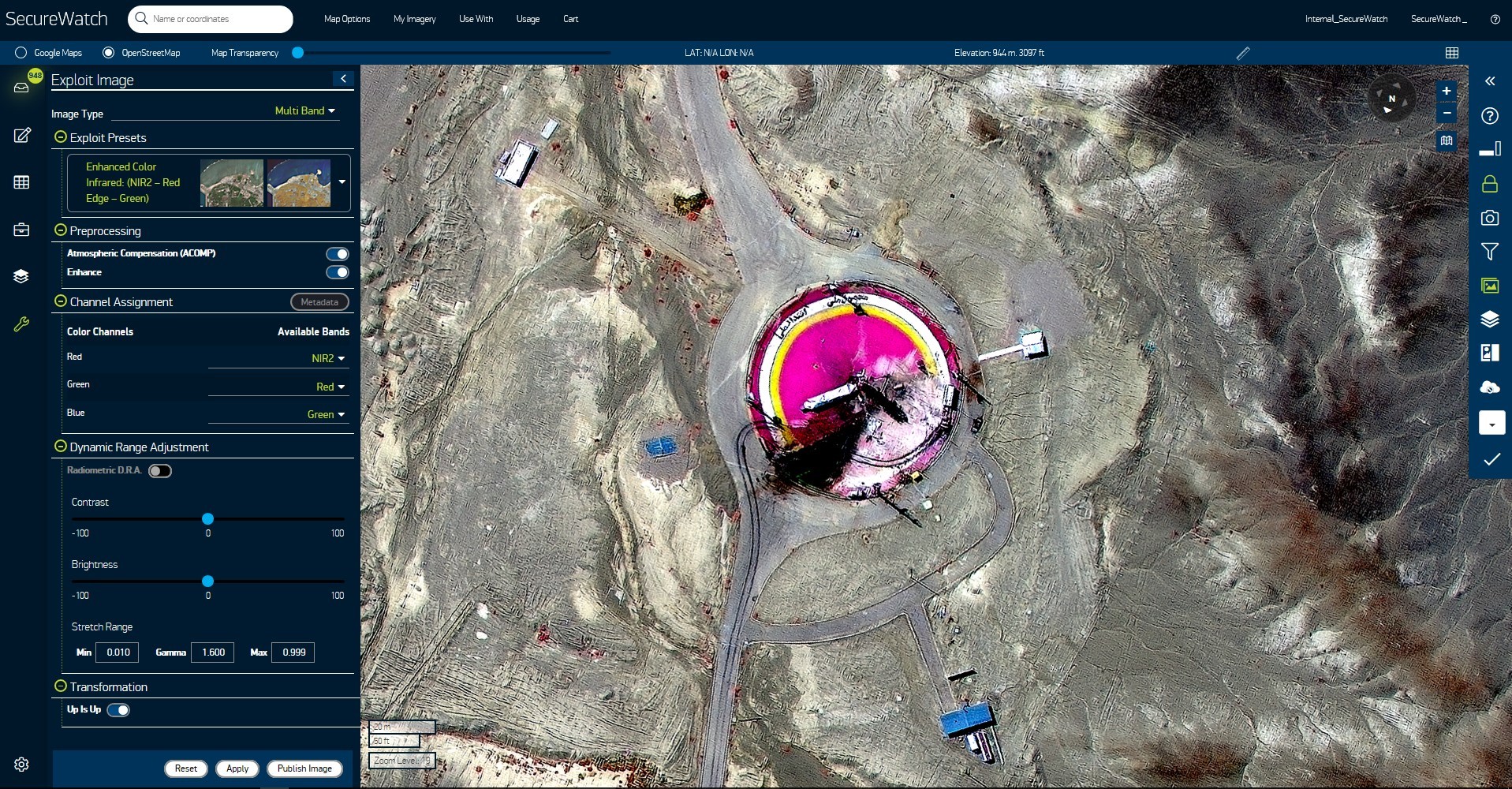In 1961, the National Reconnaissance Office (NRO) was established and tasked with maintaining the United States’ intelligence satellite fleet, everything from drawing-board conception to data collection. The geospatial intelligence gleaned from this fleet has been used by the US’s intelligence community (the other four of the US’s ‘big five’ agencies: The Central Intelligence Agency, Defense Intelligence Agency, National Security Agency, and National Geospatial-Intelligence Agency).
The establishment of the NRO pointed to a then-obvious fact of Geospatial Intelligence (GeoINT): governments held the means of data collection, creation, and dissemination.

GeoINT image showing LiDAR flood depth data overlaid on a satellite image of New Orleans following Hurricane Katrina. Image courtesy of Penn State University, NOAA, and ESA.
A recent restructuring of responsibilities indicates a shift in that idea. In 2017, the NRO took over responsibility for imagery acquisition from the National Geospatial Intelligence Agency (NGA). The NGA still dictates what imagery is needed, and the NRO collects it, but now utilizes Requests for Information (RFIs) from industry in that pursuit.
In 2019, the NRO awarded significant contracts to Maxar, BlackSky, and Planet in an effort to better understand the quality, quantity, and kinds of available commercial data. As these kinds of interactions between the US government and commercial entities continue, the intelligence community will learn more about what commercial capabilities exist and the commercial sector will hone its understanding of what imagery and intelligence the NRO might require next.
This signals a sea-change from government-generated GeoINT to commercially produced data and analytics.
Why the shift, though? As spatial data, machine-learning, and other aspects of GeoINT have grown in the commercial sector, the government sees potential for data superior to that generated by government departments.

Analysis tools in programs like Maxar’s SecureWatch (pictured here) enable users to perform multi-spectral analysis of different events, like this failed missile launch at Semnan Space Facility in Iran in 2019. Image courtesy of Maxar.
This isn’t just a federal-level dynamic; municipalities working on city transportation plans provide a clear example of the shift from public to private geospatial data generation. In the past, when a city decided to build new roads or modify some aspect of its transportation system, a mapping survey team might have gone out to collect raw data. Today, that data will likely come from a private company’s vast stores of user-generated geospatial data.
Companies like Strava Metro, a product of workout tracking app Strava, use aggregates of user data (stripped of identifiers) to illustrate popular walking, running, and biking routes through cities. Individual athletes can use this data to find new routes (or, in the age of Covid, routes that avoid others runners). In the hands of municipalities, however, this data can be used to better inform city planning efforts when new bike lanes and recreation loops are being worked on. Data from Strava Metro gets into as granular of details as which way people travel down certain streets. Cyclomedia, a Dutch company providing street-level data created with LiDAR and traditional imaging methods, takes a similar approach, marketing their information to utility companies.
The same is true for data originating from commercial efforts to automate vehicles. To ‘teach’ Cadillacs to drive autonomously on highways, aspects like slope of road, lane delineations, and other data were collected by Ushr, Inc. In-city autonomous driving would require equipping luxury vehicles with cumbersome LiDAR devices, which violate Cadillac’s aesthetic principles, but city busses have more freedom in that regard. The data Ushr generated could very well be used in service of making a fleet of city vehicles autonomous.
In city environments increasingly rich with active pedestrians, autonomous vehicles, and an enormous amount of user-generated geo-tagged GeoINT, it seems more and more likely that planners at every level of government will wind up turning to privately-created data and services to continue building the cities and communities of the future.



